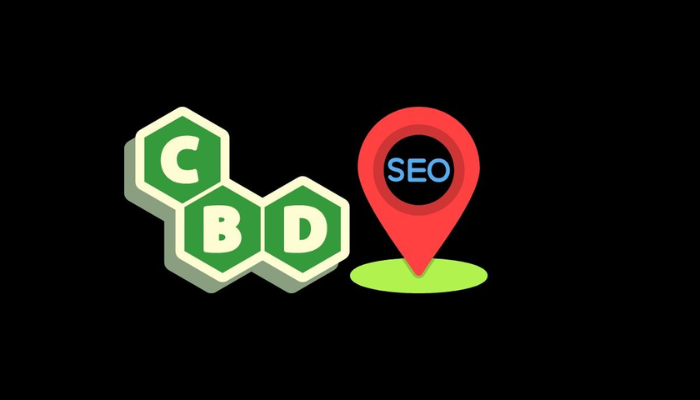
A local SEO heat map is an advanced visual tool used to monitor and analyze how well a business ranks in local search results across a specific geographic area. It paints a clear picture—literally—of your Google Business Profile’s visibility in different zones, helping local businesses understand their strengths and weaknesses in the local search landscape.
Whether you’re a small business owner, SEO consultant, or digital marketer, using a local SEO heat map can be a game-changer in refining your local SEO strategy. It allows you to make data-driven decisions by showing real-time ranking performance, guiding you on where to focus your optimization efforts. Let’s dive deep into how this powerful tool works and why it’s vital in today’s hyper-local digital marketplace.
Understanding Local SEO Heat Maps: A Visual Approach to Rankings
A local SEO heat map visualizes where your business ranks for specific keywords in various geographic points around a central location. These maps use color-coding—typically green for top rankings, yellow for mid-range, and red for poor visibility—to display how well your Google Business Profile performs in different areas. The closer you are to the top of local pack results (Google’s 3-Pack), the more favorable the heat map will appear.
Unlike traditional SEO tools that offer a snapshot of average rankings, heat maps provide hyper-local insights. For instance, you may rank #1 within a two-block radius of your store but fall to #15 just a mile away. This geographic sensitivity is crucial because Google’s local algorithm emphasizes proximity, relevance, and prominence, all of which can vary greatly by exact location.
Local SEO heat maps empower businesses to identify “ranking deserts” and “hot zones.” By pinpointing where your business underperforms, you can tailor localized campaigns—such as increasing citations in specific ZIP codes, boosting localized content, or garnering reviews from nearby customers—to close those gaps.
How Local SEO Heat Maps Work: Technology Behind the Scenes
Behind the scenes, local SEO heat map tools like Local Viking, BrightLocal, or GMB Everywhere use grid-based data points to simulate searches from multiple locations. These tools either use proxies or GPS-based APIs to mimic real-world searches, effectively showing where and how your business appears in the local pack for targeted keywords.
Each node on the grid reflects your ranking position for a chosen keyword at that precise GPS coordinate. These nodes are then color-coded to generate an interactive heat map. For example, you can set a 7×7 or 9×9 grid with half-mile or mile intervals to cover your service area. The granularity of this data provides unmatched insight into your local SEO footprint.
This mapping process goes far beyond vanity metrics. It’s a diagnostic powerhouse. Heat maps reveal algorithmic favoritism or competition density, offering actionable insights. When interpreted correctly, they help guide decisions such as whether to expand your service radius, adjust your primary categories, or update local landing pages.
Strategic Benefits of Using Local SEO Heat Maps
Implementing a local SEO heat map tool can dramatically enhance your ability to make strategic decisions. The most immediate benefit is visibility. You’re no longer guessing where you rank—you’re seeing it laid out in vivid, actionable detail. This enables you to prioritize your efforts geographically and align marketing spend with ROI potential.
Another key advantage is competitive analysis. Heat maps don’t just show your own visibility; they reveal your competitors’ positions as well. This allows you to track which businesses dominate in specific zones and identify what might be contributing to their success—whether it’s stronger reviews, better keyword targeting, or a more robust NAP consistency.
From a campaign optimization standpoint, these insights are invaluable. You can correlate your heat map data with performance metrics from Google Analytics, Ads, and Search Console. If you notice a high conversion rate in an area where your heat map is weak, it’s a sign that improving local rankings there could lead to even better results.
Using Heat Maps to Improve Local SEO Rankings
Once you’ve analyzed your local SEO heat map, the next step is implementation. Begin by focusing on your weakest zones—where you rank outside of the local pack—and optimize for hyper-local relevance. This could mean creating neighborhood-specific landing pages, adjusting service area settings, or enhancing your Google Business Profile with photos and updates targeted to that specific locale.
Another effective tactic is encouraging customer reviews from low-ranking areas. Google’s local algorithm heavily weighs recent, relevant, and location-based reviews. So if you’re underperforming in a neighborhood, make it a priority to engage customers from that area and guide them to leave positive feedback.
Local link-building is another powerful strategy. Collaborating with nearby organizations, sponsoring local events, or getting listed in regional directories can all contribute to improved authority in specific zones. Combine this with UTM-tagged Google posts and localized content marketing, and you’ll gradually start turning cold zones into hot zones.
Best Local SEO Heat Map Tools in 2025
There are several excellent local SEO heat map tools on the market today, each with its own strengths and unique features. Here are five top tools worth exploring:
- Local Falcon – Known for its easy-to-use interface and real-time local ranking scans, Local Falcon is a favorite among agencies for its comprehensive reports and API access.
- BrightLocal – While it offers a broader suite of local SEO tools, BrightLocal’s “Local Search Grid” feature excels in detailed heat map reporting and keyword tracking.
- GMB Everywhere – A lightweight Chrome extension that allows on-the-fly ranking checks across various localities, perfect for quick audits and snapshots.
- Local Viking – Designed for bulk analysis and automation, it allows scheduling of recurring scans and is a go-to for agencies managing multiple listings.
- Places Scout – Offers in-depth grid-based analysis with customizable reports and integration with reputation monitoring tools.
These platforms help you monitor trends over time, track the impact of optimization efforts, and even generate white-labeled reports for clients or stakeholders. Choosing the right tool depends on your business size, number of locations, and specific analytical needs.
Conclusion: Turn Data Into Dominance With Local SEO Heat Maps
A local SEO heat map is more than just a visual ranking report—it’s a roadmap to visibility, relevance, and growth. In a world where 46% of all Google searches have local intent, standing out in your neighborhood isn’t optional—it’s essential. By leveraging heat map data, businesses can adopt laser-focused strategies that target underperforming zones and boost visibility where it matters most.
Whether you’re optimizing a single storefront or managing a multi-location brand, local SEO heat maps give you the edge you need. Don’t just guess where you stand—see it, understand it, and improve it.
FAQs About Local SEO Heat Maps
1. What is a local SEO heat map?
A local SEO heat map is a visual tool that shows how a business ranks for specific keywords across different geographic locations using color-coded grids.
2. How do heat maps help improve local rankings?
They identify weak ranking zones, allowing you to optimize content, reviews, and local citations in those specific areas.
3. Are local SEO heat maps free?
Some tools offer free trials or limited features, but most comprehensive heat map tools are paid services.
4. Can I see my competitors on a heat map?
Yes, many tools display top-ranking competitors at each location point, enabling strategic analysis.
5. What’s the best grid size for a heat map?
It depends on your service area. A 7×7 grid with half-mile intervals is common for urban settings.
6. How often should I run heat map scans?
Monthly scans are ideal for tracking progress, though weekly scans may be useful during aggressive campaigns.
7. Do heat maps affect Google rankings?
No, they’re diagnostic tools. However, the insights gained can guide strategies that do improve rankings.
8. Can service-area businesses use heat maps?
Absolutely. Heat maps are especially useful for businesses without a physical storefront but with a defined service zone.
9. Is a heat map better than rank tracking tools?
They serve different purposes. Heat maps offer geographic context, while rank trackers give keyword position data without a location-based visual.
10. What should I do if I rank poorly in a key area?
Focus on hyper-local optimization—create area-specific content, gather reviews from that zone, and strengthen local links.



